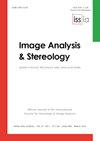RIM-ONE DL: A Unified Retinal Image Database for Assessing Glaucoma Using Deep Learning
IF 1
4区 计算机科学
Q4 IMAGING SCIENCE & PHOTOGRAPHIC TECHNOLOGY
引用次数: 40
Abstract
The first version of the Retinal IMage database for Optic Nerve Evaluation (RIM-ONE) was published in 2011. This was followed by two more, turning it into one of the most cited public retinography databases for evaluating glaucoma. Although it was initially intended to be a database with reference images for segmenting the optic disc, in recent years we have observed that its use has been more oriented toward training and testing deep learning models. The recent REFUGE challenge laid out some criteria that a set of images of these characteristics must satisfy to be used as a standard reference for validating deep learning methods that rely on the use of these data. This, combined with the certain confusion and even improper use observed in some cases of the three versions published, led us to consider revising and combining them into a new, publicly available version called RIM-ONE DL (RIM-ONE for Deep Learning). This paper describes this set of images, consisting of 313 retinographies from normal subjects and 172 retinographies from patients with glaucoma. All of these images have been assessed by two experts and include a manual segmentation of the disc and cup. It also describes an evaluation benchmark with different models of well-known convolutional neural networks.RIM-ONE DL:使用深度学习评估青光眼的统一视网膜图像数据库
第一版视神经评估视网膜图像数据库(RIM-ONE)于2011年发布。随后又进行了两项研究,使其成为评估青光眼的最常被引用的公共视网膜造影数据库之一。虽然它最初的目的是作为视盘分割参考图像的数据库,但近年来我们观察到它的使用更倾向于训练和测试深度学习模型。最近的REFUGE挑战提出了一些标准,这些特征的一组图像必须满足这些标准,才能作为验证依赖于这些数据使用的深度学习方法的标准参考。这一点,再加上在某些情况下观察到的三个版本的某些混淆甚至不当使用,导致我们考虑修改并将它们合并成一个新的,公开可用的版本,称为RIM-ONE DL (RIM-ONE for Deep Learning)。本文描述了这组图像,包括313张正常受试者的视网膜造影和172张青光眼患者的视网膜造影。所有这些图像都经过了两位专家的评估,包括对椎间盘和椎间盘杯的人工分割。描述了一种基于不同模型的卷积神经网络评估基准。
本文章由计算机程序翻译,如有差异,请以英文原文为准。
求助全文
约1分钟内获得全文
求助全文
来源期刊

Image Analysis & Stereology
MATERIALS SCIENCE, MULTIDISCIPLINARY-MATHEMATICS, APPLIED
CiteScore
2.00
自引率
0.00%
发文量
7
审稿时长
>12 weeks
期刊介绍:
Image Analysis and Stereology is the official journal of the International Society for Stereology & Image Analysis. It promotes the exchange of scientific, technical, organizational and other information on the quantitative analysis of data having a geometrical structure, including stereology, differential geometry, image analysis, image processing, mathematical morphology, stochastic geometry, statistics, pattern recognition, and related topics. The fields of application are not restricted and range from biomedicine, materials sciences and physics to geology and geography.
 求助内容:
求助内容: 应助结果提醒方式:
应助结果提醒方式:


